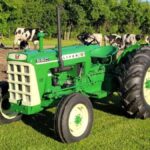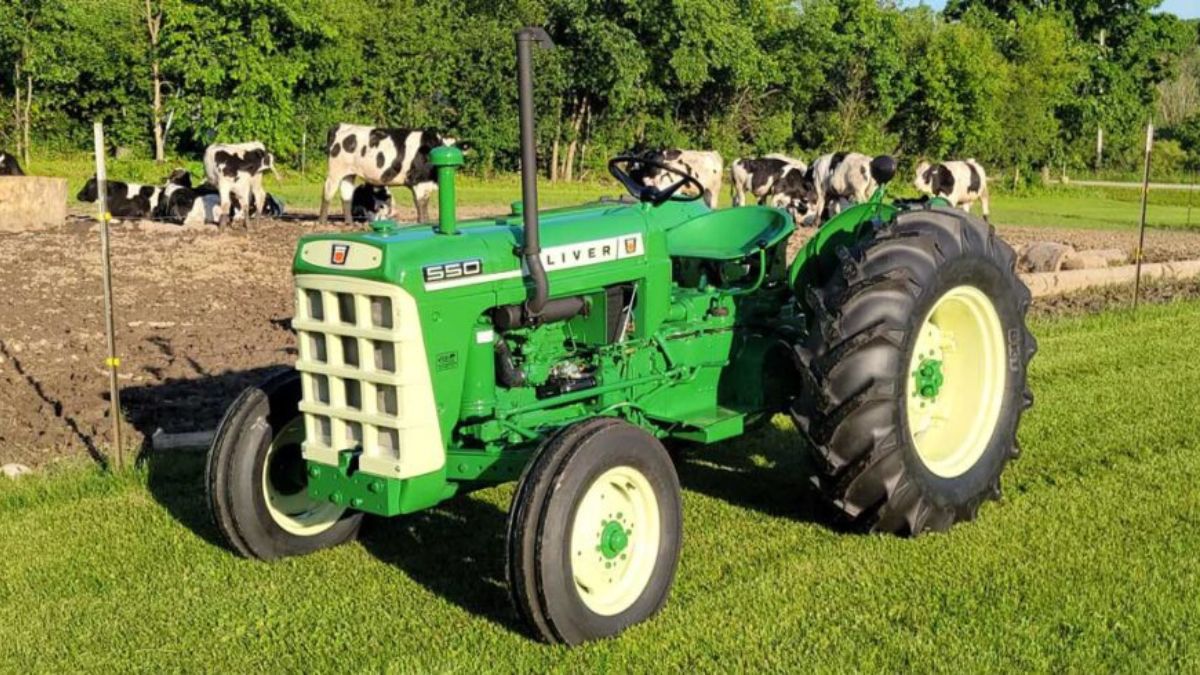The Oliver 550 1L2602 tractor holds a special place in the hearts of vintage machinery enthusiasts. Known for its rugged build and exceptional reliability, this classic piece of farming equipment has stood the test of time. Whether you stumbled upon one in an old barn or inherited it from a family member, restoring the Oliver 550 is not just about reviving machinery—it’s about breathing new life into history.
However, diving into restoration can be daunting. From rusted parts to faded paint jobs, every aspect presents unique challenges that require patience and skill. But fear not! With some essential tools at your disposal and a solid plan in mind, transforming your Oliver 550 1L2602 into a showpiece is well within reach. Let’s explore what it takes to bring this magnificent tractor back to its former glory!
Common Restoration Challenges for the Oliver 550 1L2602
Restoring the Oliver 550 1L2602 can be a rewarding adventure, but it comes with its share of challenges. One common issue is rust. Many of these tractors have spent years exposed to the elements, leading to corrosion that can affect both aesthetics and functionality.
Finding replacement parts is another hurdle. Original components may be hard to come by, making sourcing a challenge for enthusiasts. This often requires creativity or custom fabrication.
Additionally, understanding the mechanical intricacies can pose difficulties for those unfamiliar with this model’s specifications. Engine problems are frequent in older models due to wear and tear.
Keeping track of all repairs and modifications during restoration demands organization and patience. Each step in the process must be documented carefully to ensure consistency throughout your project.
Essential Tools for Restoration
Restoring an Oliver 550 1L2602 requires the right tools for success. First, a good set of hand tools is essential. Wrenches, screwdrivers, and pliers should be your go-to.
Next on the list are power tools. A reliable drill will make tasks much easier. An angle grinder can help in removing rust and paint with ease.
Don’t forget about safety gear! Gloves and goggles protect you from debris while working on machinery.
For more intricate parts, specialized tools like torque wrenches or pullers may be necessary to ensure everything fits just right.
Consider investing in a quality shop manual specific to the Oliver 550 1L2602. It provides invaluable guidance throughout your restoration journey.
Step-by-Step Restoration Process for the Oliver 550 1L2602
Restoring the Oliver 550 1L2602 requires careful planning and execution. Start by assessing the condition of your tractor. Identify which parts need attention first.
Next, strip down the exterior components carefully. Remove rusted panels or damaged sections, making sure to document their placement for reassembly later.
Once disassembled, it’s time to tackle engine restoration. Clean all gaskets and replace worn-out seals and bearings. This step is crucial for optimal performance.
After addressing mechanical issues, shift focus to cosmetic enhancements. Sand down rust spots before applying primer and paint to achieve a fresh look.
Don’t forget about interior refurbishment! Repair or replace seats and dashboard elements for comfort during use.
Throughout each phase, keep track of progress with photos or notes; this makes returning to any part easier if needed later on.
Tips and Tricks for Restoring Specific Parts (engine, body, interior, etc.)
Restoring an Oliver 550 1L2602 can be a rewarding project. Focusing on specific parts ensures you bring out its true character.
When tackling the engine, start with a thorough cleaning. Remove any grease and grime before checking for wear or damage. Replace gaskets and seals to prevent leaks during operation.
For the body, rust repair is crucial. Sand down affected areas and apply a rust-inhibiting primer before painting. A quality paint job not only enhances aesthetics but also protects against future corrosion.
Interior restoration is all about comfort and style. Replace worn upholstery with durable materials that match the tractor’s vintage look. Don’t overlook the dashboard; fresh gauges can make a world of difference in functionality.
Each part tells a story, so take your time to ensure every detail shines through in your restored Oliver 550 1L2602!
Maintaining and Preserving Your Restored Oliver 550 1L2602
After successfully restoring your Oliver 550 1L2602, the next step is maintenance. Regular care helps keep this classic tractor in prime condition.
Start with routine inspections. Check fluid levels and look for leaks or wear in hoses and belts. Addressing these issues early can prevent more extensive damage later on.
Clean the exterior regularly to protect against rust and dirt buildup. A simple wash followed by a wax treatment can enhance its appearance while providing a protective layer.
Don’t overlook the engine! Regular oil changes are crucial for optimal performance. Use high-quality oil that suits vintage engines, ensuring longevity.
Store your tractor properly during off-seasons. Keep it covered in a dry space to shield it from harsh weather conditions and sun exposure, which can degrade materials over time.
Conclusion
Restoring an Oliver 550 1L2602 can be a rewarding experience, breathing new life into a classic tractor. While the process may present challenges, being prepared and equipped with the right tools makes all the difference. Each restoration journey is unique; your personal touches will reflect your dedication to preserving its heritage.
Remember that attention to detail pays off, especially in areas like the engine and bodywork. Don’t hesitate to seek advice from fellow enthusiasts or online communities dedicated to vintage tractors. Their insights can guide you through tricky situations and enhance your knowledge.
Once restored, maintaining your Oliver 550 1L2602 becomes essential for longevity. Regular inspections and proper care ensure it remains in prime condition for years of enjoyment.
Whether you’re using it on the farm or showcasing it at events, this iconic tractor deserves every bit of effort you put into bringing it back to life. Enjoy each step along the way as you embark on this exciting restoration adventure!










